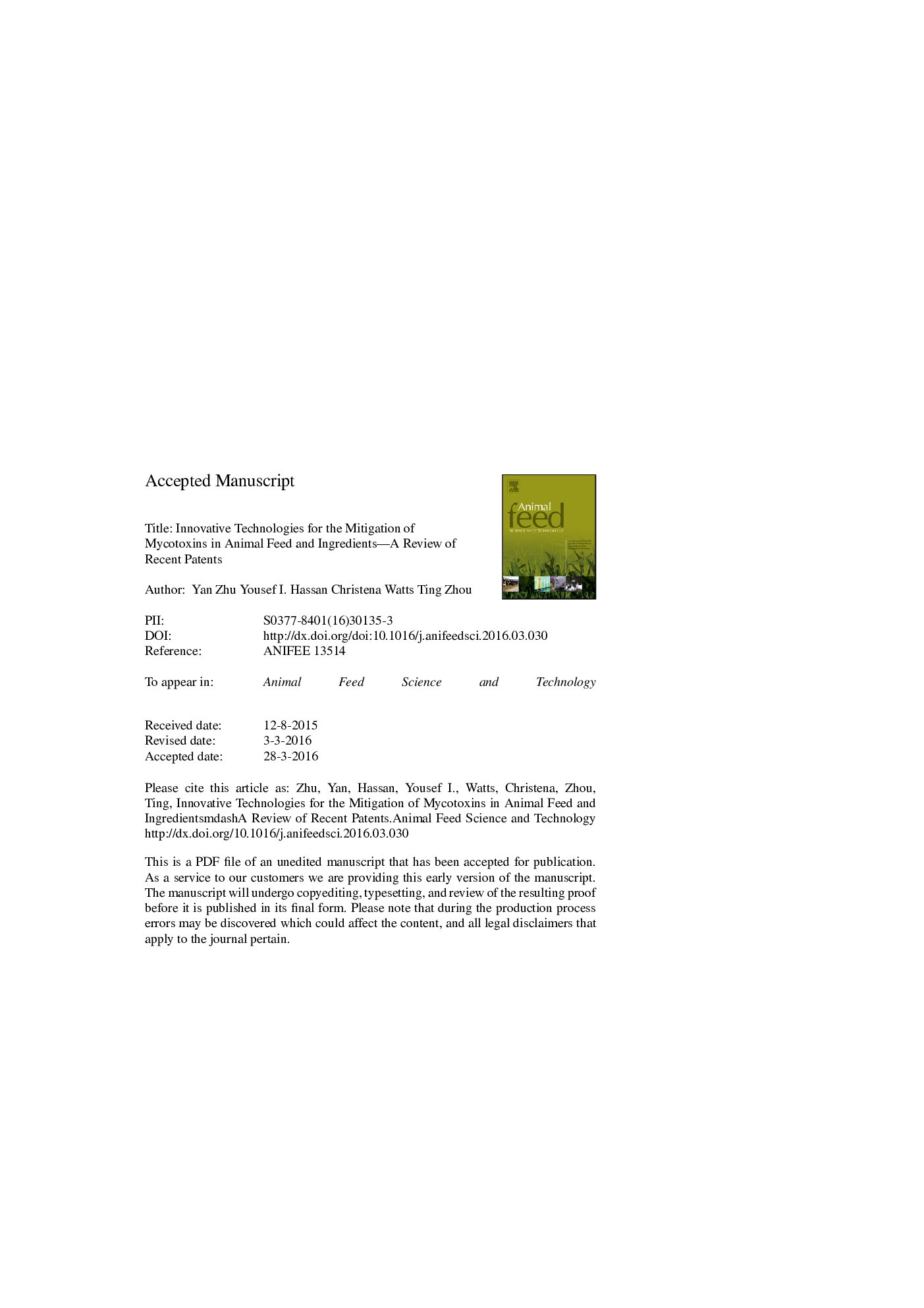| Article ID | Journal | Published Year | Pages | File Type |
|---|---|---|---|---|
| 8491224 | Animal Feed Science and Technology | 2016 | 35 Pages |
Abstract
Mycotoxins are secondary metabolites produced by specific fungi that can be found throughout the dietary chain of animal feed. Among the agriculturally important mycotoxins are: aflatoxin B1 (AFB1), deoxynivalenol (DON), zearalenone (ZEA), nivalenol (NIV), fumonisin B1 (FUB1), ochratoxin A (OTA), citrinin (CIT) and patulin (PAT). Economic losses and health concerns caused by increased frequencies of mycotoxin contaminations have attracted research interests toward exploring new inactivation and detoxification methods. Suggested strategies of decontamination include eliminating mycotoxins from contaminated grains, decreasing the bioavailability of such mycotoxins in the gastrointestinal tracts of animals, or directly degrading mycotoxins in feeds. Based on these points of action, a number of approaches such as adsorption, chemical treatment, and bio-transformation by catabolizing microorganisms/enzymes have been developed and optimized. This review summarizes the detoxification techniques and industrial applications (granted and pending patents) reported in the last five years (2010-2015). A clear understanding of such novel detoxification methods and development-trends can be beneficial to the feed and livestock industry and will contribute to assuring pre- and post-harvest management and processing practices are in place that maximizes the consumers' safety and profits of livestock and related industries.
Keywords
HSCASNIVCMBBSMOchratoxin αZEAADFIADG3-acetyldeoxynivalenolOTADDGDDGSDeoxynivalenolTRFsUVBUVAT-RFLPDWGAFB1FUMAflatoxin B1AflatoxinsEnzymesUltraviolet Aultraviolet BOchratoxinsOchratoxin AAdsorptionDONZearalenoneBio-transformationDetoxificationFumonisin B1FumonisinsTerminal restriction fragmentsMycotoxinNivalenolpolymerase chain reactionPCRpatPatulin
Related Topics
Life Sciences
Agricultural and Biological Sciences
Animal Science and Zoology
Authors
Yan Zhu, Yousef I. Hassan, Christena Watts, Ting Zhou,
